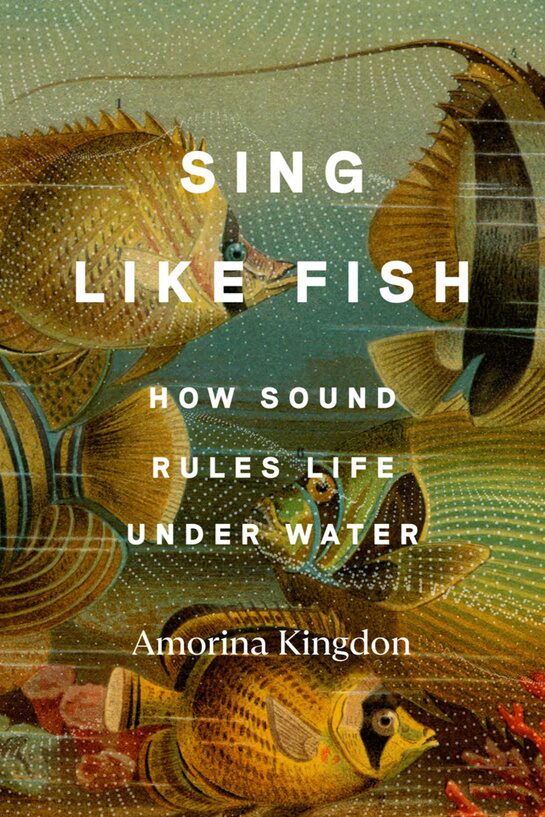
Introduction:
“Sing Like Fish” by Amorina Kingdon is an evocative exploration of the underwater world, focusing on the sounds that permeate the oceans and the creatures that inhabit them. This book combines scientific inquiry with poetic prose, revealing the intricate relationships between marine life and their acoustic environment. It emphasizes the importance of sound in the ocean and the impact of human activity on this delicate ecosystem.
Main Characters
While “Sing Like Fish” does not have traditional characters like a novel, it features a variety of marine animals and their interactions with sound. Key figures in this narrative include:
1. Whales
Whales are highlighted for their complex songs, which serve various purposes, including communication, navigation, and mating. The narrative delves into the different species of whales, their unique vocalizations, and the significance of these sounds in their social structures.
2. Dolphins
Dolphins are showcased for their intelligence and social behaviors. Their echolocation abilities and vocal communication are explored, demonstrating how sound is essential for their survival and interaction within pods.
3. Fish
Various species of fish contribute to the underwater symphony, each producing distinct sounds for mating, warning, or establishing territory. The book illustrates how these sounds create a vibrant aquatic soundscape.
4. Human Impact
Humans are portrayed as both observers and disruptors of the marine soundscape. The narrative addresses the consequences of noise pollution and climate change on marine life, emphasizing the need for conservation efforts.
Key Events and Plot
“Sing Like Fish” unfolds through a series of thematic explorations rather than a linear plot. Key events include:
1. Introduction to Underwater Soundscapes
The book begins with an introduction to the concept of underwater soundscapes, explaining how the ocean is far from silent. Kingdon invites readers to listen to the myriad sounds produced by marine life, setting the stage for a deeper understanding of the acoustic environment.
2. Exploration of Whale Songs
A significant portion of the book is dedicated to the songs of whales. Kingdon describes the complexity of these vocalizations, which can travel vast distances underwater. She discusses the role of whale songs in communication and the ways they reflect the emotional lives of these creatures.
3. Dolphin Communication
Kingdon delves into the sophisticated communication methods of dolphins, highlighting their use of clicks and whistles. She provides insights into how these sounds facilitate social bonding and navigation, showcasing the intelligence of these marine mammals.
4. The Role of Fish Sounds
The narrative shifts to the sounds produced by fish, revealing how these creatures use sound for mating rituals and territorial disputes. Kingdon emphasizes the diversity of fish vocalizations and their importance in maintaining the balance of marine ecosystems.
5. Human Influence and Conservation
The book addresses the detrimental effects of human activities, such as shipping, industrial noise, and climate change, on marine soundscapes. Kingdon advocates for conservation efforts and the need to protect the acoustic environment of the oceans to preserve the delicate balance of marine life.
Themes
1. The Importance of Sound in Nature
A central theme of “Sing Like Fish” is the significance of sound in the natural world. Kingdon illustrates how sound is a vital communication tool for marine animals, shaping their social structures and interactions.
2. Human Disruption of Marine Environments
The book highlights the impact of human activity on marine ecosystems, particularly through noise pollution. Kingdon emphasizes the need for awareness and action to mitigate these effects and protect the ocean’s soundscapes.
3. Connection Between Life Forms
Kingdon explores the interconnectedness of marine life, showing how sound facilitates relationships among species. This theme underscores the idea that all creatures in the ocean contribute to a larger ecosystem, relying on sound for survival.
4. Conservation and Responsibility
The narrative serves as a call to action for readers to recognize their role in protecting the oceans. Kingdon advocates for conservation efforts and the importance of preserving the natural soundscapes that are crucial for marine life.
Conclusion
“Sing Like Fish” by Amorina Kingdon is a beautifully crafted exploration of the underwater world, emphasizing the importance of sound in marine ecosystems. Through her intimate and artful prose, Kingdon invites readers to appreciate the complexity of oceanic life and the critical role that sound plays in the survival of various species.
The book serves as both an educational resource and a poignant reminder of the fragility of marine environments. By highlighting the impact of human activities on these ecosystems, Kingdon encourages readers to take responsibility for their actions and advocate for the protection of the oceans.
In a world where the sounds of the sea are often overlooked, “Sing Like Fish” opens our ears to the vibrant symphony of life beneath the waves. It challenges us to listen, learn, and act in ways that honor and preserve the incredible diversity of marine life. This exploration not only enriches our understanding of the ocean but also deepens our connection to the natural world, urging us to become stewards of the environment for future generations.
Ultimately, “Sing Like Fish” is a celebration of the wonders of the underwater world, reminding us that the ocean is alive with sound, emotion, and life, and that we must work to protect it. Kingdon’s work resonates with readers, inspiring a sense of wonder and responsibility towards the delicate balance of life in our oceans.
Read Full Novel
Sing Like Fish: How Sound Rules Life Under Water by Amorina Kingdon | Goodreads
Read Related Novels
- Read On Call by Anthony Fauci eBook Review
- Read Vector by Robyn Arianrhod eBook Review
- “Mark & Don’t Tell” by Rory Miles eBook Review
- “Knot All Is Perfect” by Holly Monroe eBook Review
- Heat Hesitation by Birdie D’Avo’ eBook Review


